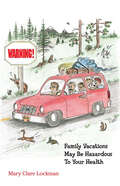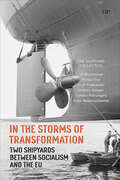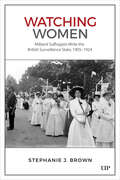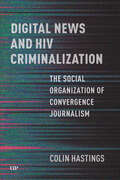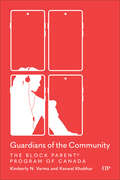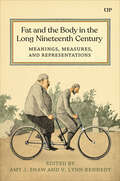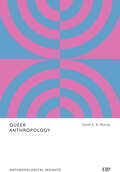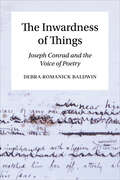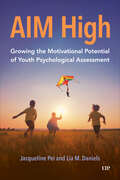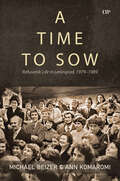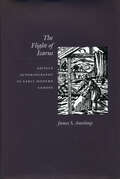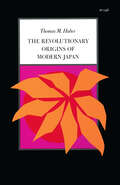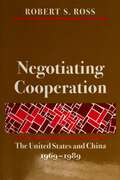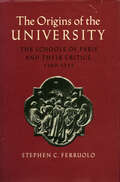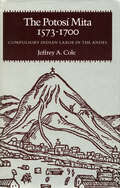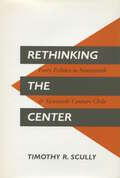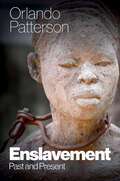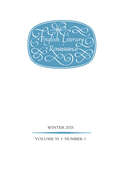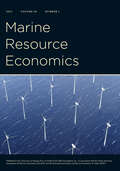- Table View
- List View
Warning! Family Vacations May be Hazardous to Your Health
by Mary Clare LockmanAgainst the backdrop of the Rockies, Yellowstone, Lake Superior, Washington, D.C., “Warning! Family Vacations May Be Hazardous to Your Health” is a must for all parents who have looked forward to a family vacation only to pull their hair out strand by strand because their children will not stop fighting. It’s a rollicking ride that creates a sense of wonder for places visited but the main theme is the family and its often challenging relationships. As the sibling conflict escalates, major adjustments are needed. Within the chapters are practical solutions any parent can use. Encompassing seven years in the family’s life. the gets a flavor of traveling with preschoolers, adolescents, and teenagers. Filled with adventure and humor, this is not a book anyone will soon forget.
On Speaking Terms: Avoidance Registers and the Sociolinguistics of Kinship (Studies in the Anthropology of Language, Sign, and Social Life)
by Luke FlemingWhy are kin, in societies all over the world, divided into “joking” and “avoidance” relations? Foundational figures in the human sciences, from E.B. Tylor and Alfred Radcliffe-Brown to Sigmund Freud and Claude Lévi-Strauss, have sought to explain why some classes of kin are normatively expected to prank and tease one another while others must studiously avoid each other’s presence. In this extensively researched comparative study, linguistic anthropologist Luke Owles Fleming offers a bold new answer to this problem. With a particular focus on avoidance relationships, On Speaking Terms argues that in order to understand cross-cultural convergences in the patterning of kinship-keyed comportments, we must attend to the sociolinguistic codes through which kinship relationships are enacted. Drawing on ethnographic data from more than one hundred different societies, the book documents and analyses parallels in the linguistic and non-verbal signs through which avoidance relationships are experientially realized. With dedicated discussions of Aboriginal Australian “mother-in-law languages,” name and word tabooing practices, pronominal honorification, and non-verbal strategies of interactional and sensorial avoidance, it reveals recurrent sociolinguistic patterns attested in kinship avoidance. In demonstrating the vital role of sociolinguistic codes for transforming kinship categories into phenomenologically rich relationships, On Speaking Terms makes an important contribution to the anthropology of kinship.
In the Storms of Transformation: Two Shipyards between Socialism and the EU (German and European Studies #56)
by Andrew Hodges Philipp Ther Ulf Brunnbauer Piotr Filipkowski Stefano Petrungaro Peter WegenschimmelIn the 1990s, states in what would become the eastern edge of the European Union transformed their political systems and economies, leaving state socialism behind for liberal democracies and free markets. In the ensuing decades, two shipyards that were once the pride of their cities – in Gdynia, Poland, and Pula, Croatia – went bankrupt, unable to withstand global competition. Through an interdisciplinary study of these two shipyards, In the Storms of Transformation brings together a team of researchers to re-evaluate the shift from state socialism to market capitalism and offer a new periodization. With perspectives from social anthropology, sociology, and business history, the book argues that this transformation began with the oil crisis of the early 1970s and ended with EU accession – in 2004 in Poland and in 2013 in Croatia – highlighting the EU competition laws and global competition that pushed the shipyards into bankruptcy and diminishing the role of the revolutions of 1989. In the Storms of Transformation bridges local labour history with global market forces, going beyond prevalent narratives of loss and nostalgia or successful neoliberal change to offer a novel and nuanced reading of post-communist transformation and its contradictions.
Watching Women: Militant Suffragists Write the British Surveillance State, 1905–1924
by Stephanie J. BrownHistorians of the early twentieth century often focus on the surveillance of anarchist, communist, and anti-colonial movements, overlooking the resource-intensive policing of the women’s suffrage movement as a significant expansion of the state’s surveillance activities. Bridging that gap in the historical record, Watching Women draws on recently declassified Home Office documents to present a fuller picture of the British domestic surveillance practices. The book maps the history of state surveillance of the British women’s suffrage movement and its leaders, explaining how militant activists used various forms of writing – novels, short stories, journalism, and memoirs – to represent and resist state surveillance. These genres in the book enable specific, strategic responses to the state’s repression of suffrage militancy. The book explores the aftermath of suffrage surveillance by tracing the diverging activist careers of two prominent suffragettes, Sylvia Pankhurst and Mary Allen, during and after World War I, as they continued their engagement with the state’s surveillance apparatuses. In doing so, Watching Women illuminates histories of the suffrage campaign through women’s experiences of navigating surveillance.
Absorption Narratives: Jewishness, Blackness, and Indigeneity in the Cultural Imaginary of the Americas
by Stephanie M. PridgeonIn Absorption Narratives, Stephanie M. Pridgeon explores cultural depictions of Jewishness, Blackness, and Indigeneity within a comparative, inter-American framework. The dynamics of Jewishness interacting with other racial categories differ significantly in Latin America and the Caribbean compared with those in the United States and Canada, largely due to long-standing and often disputed concepts of mestizaje, broadly defined as racial mixture. As a result, a comprehensive understanding of Jewishness and the construction of racial identities requires an exploration of how Jewishness intersects with both Blackness and Indigeneity in the Americas. Absorption Narratives charts the ways in which literary works capture differences and similarities among Black, Jewish, and Indigenous experiences. Through an extensive and diverse examination of fiction, Pridgeon navigates the complex connections of these identity categories, offering a comparative perspective on race and ethnicity across the Americas that destabilizes US-centric critical practices. Revealing the limitations of US-focused models in understanding racial alterity in relation to Jewishness, Absorption Narratives emphasizes the importance of viewing the narrative of race relations in the Americas from a hemispheric standpoint.
Securing Canada’s Future: Vital Insights from Women Experts (UTP Insights)
by Aisha AhmadAfter decades of uncontested dominance, the era of American hegemony is ending and a new multipolar world order is emerging in its place. This transformation is also occurring alongside uncontrolled climate change and the development of volatile new technologies. Together, these factors dramatically complicate the global threat landscape. Securing Canada’s Future offers a comprehensive analysis of the most serious challenges that Canada will face in the near future. Written by leading Canadian women scholars and security experts, this collection covers the most critical risks and threats on the horizon, including rising Chinese power, resurgent Russian aggression, escalating competition in the Arctic, the near irreversibility of climate change, disaster management and mitigation, evolving cybersecurity threats, and gendered violence. Securing Canada’s Future explores what this future threat landscape will look like for Canadians and shows how Canada can prepare for and mitigate upcoming risks. This practical, forward-thinking volume maps out the most urgent national and international security issues that Canada is destined to face in the foreseeable future.
Digital News and HIV Criminalization: The Social Organization of Convergence Journalism (Institutional Ethnography)
by Colin HastingsFor years, HIV activists and researchers have expressed deep concerns about the stigmatizing and sensational tone of news stories about HIV criminalization. Digital News and HIV Criminalization investigates the everyday work of journalists and uncovers how newswork routines are hooked into other institutions, including the criminal legal system, police, and public health, that regulate the daily lives of people living with HIV. This lively institutional ethnography offers key insights into how the digital news media ecosystem is socially organized. It reveals that the fast-paced conditions of digital news media in the age of convergence journalism require the constant, rapid production of sensational news stories that will be consumed widely by online audiences, often resulting in news writing that perpetuates social harms connected to stigmatizing, racist, and anti-immigrant views. The book illustrates how biased reporting on HIV criminalization reflects broader trends in online news and presents opportunities for HIV activists to form coalitions with other groups negatively affected by the current landscape of convergence journalism. Tracing how work that produces and circulates a standard genre of news story about HIV criminalization is coordinated across time and space, Digital News and HIV Criminalization offers a groundwork for political action aimed at disrupting the production of stigmatizing news stories.
Guardians of the Community: The Block Parent® Program of Canada
by Kim Varma Kanwal KhokharThe Block Parent® Program of Canada was launched in 1968 following a tragic child abduction and homicide in Ontario. It rapidly expanded across the country, becoming the largest volunteer-led child safety initiative. For over fifty years, the program relied on volunteer homemakers, mostly stay-at-home mothers, who signaled their homes as safe havens for distressed children. Supported by partnerships with police, local businesses, and schools, the program provided a community-based approach to child protection. Although participation declined over the years, recent concerns about bullying, traffic safety, and child protection have sparked renewed interest in Block Parent communities. Guardians of the Community examines the social, political, technological, and cultural conditions that shifted along with the program to understand the landscape of child protection and community crime prevention over the last five decades. The book draws upon open-ended interviews with key figures who were instrumental in launching and leading the Block Parent Program, analyses of annual reports and documents from the program, and public sources including newspapers, social media, and Hansard debates to explore public and political perceptions of the program and related safety concerns. In exploring the motivations underlying involvement in child safety programs, Guardians of the Community reveals the connections between community engagement and cohesion, civic responsibility, and concerns around child protection.
Fat and the Body in the Long Nineteenth Century: Meanings, Measures, and Representations
by V. Lynn Kennedy Amy J. ShawIn the nineteenth and early twentieth centuries, the body was a key focus of discourse. Fat and the Body in the Long Nineteenth Century animates discussion and analyses of fatness, highlighting how corporeal expectations fit into larger social systems and showing how interpretations have shifted over time. This collection examines a host of primary sources – including literature, art, medical treatises, journalism, political cartoons, soldiers’ letters home, and popular fiction – to identify trends in how fat was perceived and promoted in the English-speaking world over the long nineteenth century. Divided into four thematic sections, the book addresses epistemologies, artistic and literary representations, the turn towards quantification and measurement, and the connections to imperialism and colonialism. It explores the complex debate about the meaning of fat and its signalling of health, beauty, moral strength, and class status. The book shows how contemporary presentations and discussions of fat offer insights into ideals of gender and race and the processes of imperialism and of professionalization in the social sciences and medicine. By tracing how debates shifted over time, the book ultimately reveals that there was no universal interpretation of fat as a positive or negative characteristic throughout the nineteenth century.
Queer Anthropology: Anthropological Insights (Anthropological Insights)
by David A.B. MurrayIn the early 1990s, “queer anthropology” represented a new and radically different approach to anthropological research on sexuality and gender, but it is now an established subfield of sociocultural anthropology. Queer Anthropology provides a concise, accessible overview of queer anthropology’s academic and activist origins, its key theoretical and methodological principles, its strengths and weaknesses, and how it has changed since its first appearance over thirty years ago. Each chapter includes discussion questions, recommended readings, and ethnographic examples to illustrate key concepts or themes. The book is written in accessible language for students, instructors, and non-specialist readers interested in how anthropologists think, research, and write about gender, sex, and sexuality. Designed for introductory anthropology, gender, and/or queer studies courses, Queer Anthropology provides important insights into the past, present, and future of queer anthropological research.
The Inwardness of Things: Joseph Conrad and the Voice of Poetry
by Debra Romanick BaldwinThe Inwardness of Things considers Joseph Conrad as a modern voice in an ancient and enduring quarrel between the poets and the philosophers. Beginning from the polemical poetics of his 1897 preface, Debra Romanick Baldwin focuses on Conrad’s distinctively poetic “inward” approach to truth – an inwardness that is found in lived experience, in language, and in the world beyond the individual. The book traces Conrad’s poetic voice from the rhetoric of his private letters to the narrative techniques of his fiction and finally to his explicit engagement with abstract approaches to truth. Baldwin applies narrative and rhetorical analysis to Conrad’s private correspondence, showing how he encouraged fellow writers – John Galsworthy, F. Warrington Dawson, R.B. Cunninghame Graham, Ted Sanderson, and Edward Noble – to engage with the inwardness of their own experience. The book explores how Conrad crafted moments of narrative solidarity in his fictional narratives to evoke the experience of the inwardness of another, while also considering his explicit polemics against abstract approaches to truth-seeking. Mindful of the colonial, late Victorian, Polish Romantic, and cosmopolitan contexts in which Conrad wrote, The Inwardness of Things nevertheless situates him in a broader human conversation that he himself invited and argues for the enduring value of his art.
AIM High: Growing the Motivational Potential of Youth Psychological Assessment
by Jacqueline Pei Lia DanielsIn AIM High, Jacqueline Pei and Lia M. Daniels combine their decades of theoretical and applied expertise to bring motivation theory alongside the practice of psychological assessment. The book highlights the opportunity to stand with children and their support teams to aim high, offering a picture of children and youth that meaningfully considers growth and movement for goal attainment. The book explores ways in which all participants in the assessment process – including psychologists, caregivers, and allied professionals – share responsibility to build relational systems, seek understanding about the child, and engage in intentional communication. Pei and Daniels highlight ways in which the referral, assessment, and communication processes of assessment may grow through motivational perspectives that recognise the inherent movement of children. These ideas are leveraged to advance professional practices through the AIM Model (Assessment for Intervention and Motivation), a framework on which readers can organise and evaluate their existing experiences of the practice of psychological assessment, while emphasizing the shared understandings necessary to pursue healthy outcomes for all children. Whether you are just beginning your training to work with children or have been at it for decades, AIM High reveals compelling ideas to help you see the evidence of growth in yourself and the youth with whom you work.
A Time to Sow: Refusenik Life in Leningrad, 1979–1989
by Ann Komaromi Michael BeizerA Time to Sow offers a glimpse into the unofficial Jewish life in 1980s Leningrad, shaped by numerous long-term refusals from authorities to grant exit visas to Jews seeking to migrate to Israel. The book reveals how the lives of the “refuseniks” were marked by a continuous struggle for the right to emigrate, as well as by the formation of an informal community. It traces how the community provided mutual assistance in times of distress, particularly offering support to imprisoned activists and their families. The community also maintained contacts with co-religionist supporters visiting from abroad, engaged in Hebrew teaching, facilitated religious revival, celebrated Jewish holidays as a group, disseminated samizdat publications, conducted popular lectures on Jewish history and culture, and pursued Jewish studies. The book divulges how all these activities took place in private, despite the ban and persecution by the authorities. Drawing from analyses of historical sources, rare archival materials, as well as personal experiences including interviews with activists, the book provides a rich and nuanced understanding of this unique period. Ultimately, A Time to Sow presents a critical, non-apologetic perspective to uncover a distinctive, little-known chapter of Russian Jewish history in Leningrad, one of Russia’s most important cities.
The Flight of Icarus: Artisan Autobiography in Early Modern Europe
by James S. AmelangExploring autobiographical texts written by European urban craftsmen from the fifteenth to the eighteenth centuries, this wide-ranging book studies memoirs, diaries, family chronicles, travel narratives, and other forms of personal writings from Spain, France, Italy, Germany, and England. In the process, it considers the motivations of the authors, the changing forms and emphases of artisan narratives, and, more generally, the significance of written self-expression in early modern popular culture. By analyzing reading and writing as practices laden with social meaning, this work aims to illuminate the changing role of the lower classes and other groups considered marginal in the history of literature and literacy. It uncovers an “Icarian” logic by which writing about the self and one’s immediate and private world developed as a complex response to widely shared expectations regarding the cultural and political subordination of craftsmen and others relegated to the margins of public life and discourse. The book also contributes to the contemporary interdisciplinary debate concerning the nature and evolution of autobiographical writing. It draws upon those currents within literary studies, such as feminist criticism, which favor a more flexible approach to the study of first-person narrative than that adopted by traditional literary critics and historians of ideas. It also argues for revising the standard history of autobiography, eschewing the teleological presentation of a small handful of classic texts in favor of a more nuanced trajectory in which a wide range of social actors helped shape the emerging patterns of modern self-understanding and expression.
The Revolutionary Origins of Modern Japan
by Thomas M. HuberChallenging the popular view of the Meiji Restoration as a "revolution from above," this book argues that its main cause was neither the growing threat of the West nor traditional loyalty to Emperor and nation, but rather lay in class conflict and long-term institutional change. The author sees the Restoration as a revolution against feudal privilege carried out from below by a service intelligentsia of minor administrators, priests, scholars, and village officials. The book focuses on the politically most effective body of activists, those in the domain of Chōshū, and on their most important leaders of the 1850s and 1860s: Yoshida Shōin, Kusaka Genzui, and Takasugi Shinsaku. It examines their social and educational background, explores their motives for acting, and follows them through their intellectual and political struggles. The final chapter explains various heretofore puzzling aspects of the Meiji period (1868-1912) in terms of its revolutionary origins, and concludes by showing that the Restoration, far from being uniquely Japanese, had many of the characteristics we associate with the great revolutions of England, France, and Russia.
Negotiating Cooperation: The United States and China, 1969-1989
by Robert S. RossIn the 1970s and 1980s the United States and China developed cooperative relations to enhance security against the USSR. Conventional wisdom claims Washington and Beijing agreed to 'shelve' conflictual issues; where conflict occurred, diplomatic error or domestic politics are blamed. This book shows, however, that US-China cooperation was fragile precisely because of ongoing conflicts, notably that over Taiwan. The author disputes Kissinger's claim that only he and Nixon understood Taiwan's unimportance. China never found the US stance on Taiwan acceptable, and the issue required constant attention. The book shows how the two powers built cooperative relations despite Taiwan. It explains how negotiations were conducted, and why the two powers at times compromised and at times accepted the status quo. It examines why relations on occasion became acrimonious and why the acrimony subsided.
The Origins of the University: The Schools of Paris and Their Critics, 1100-1215
by Stephen C. FerruoloThe University of Paris is generally regarded as the first true university, the model for others not only in France but throughout Europe, including Oxford and Cambridge. This book challenges two prevailing myths about the university's origins: first, that the university naturally developed to meet the utilitarian and professional needs of European society in the late Middle Ages, and second, that it was the product of the struggle by scholars to gain freedom and autonomy from external authorities, most notably church officials. In the twelfth century, Paris was the educational center of Europe, with a large number of schools and masters attracting and competing for students. Over the decades, the schools of Paris had many critics—monastic reformers, humanists, satirists, and moralists—and the focus of this book is the role such critics played in developing the schools into a university. Ferruolo argues that it was the educational values and ideas promoted by the critics—ideas of the unity of knowledge, the need to share learning freely and willingly, and the higher purposes and social importance of education—that first inspired the scholars of Paris to join together to form a single guild. Their programs for educational reforms can be seen in the first set of statues promulgated for the nascent University of Paris in 1215.
The Potosí Mita, 1573-1700: Compulsory Indian Labor in the Andes
by Jeffrey A. ColePotosí, a mining center in what is now Bolivia, was the most productive source of silver in the Spanish American Empire between the mid-1500's and the late seventeenth century. Much of this success was attributable, at least initially, to the mita, a system of draft Indian labor instituted by Viceroy Francisco do Toledo in 1573 for the working of the silver mines and refineries. Bitter debate swirled around the mita during most of its 250-year history. It was assailed by its enemies as a form of servitude worse than slavery and accused of depopulating the provinces subject to it, yet it was supported by many, however reluctantly, who believed that the Spanish Empire depended on Potosí silver for its survival. The author traces the evolution of the mita from its inception to the end of the Hapsburg epoch in 1700. The primary focus is on the metamorphosis of the mita under the pressures of changing production realities at Potosí and demographic developments in the provinces from which the Indians were drafted. The author describes the role of native headmen (kurakas) in the system, the means used by Indians to evade service, and the efforts of the mining guild to tailor the mita to its needs. The secondary focus is on the Hapsburg government's administration of the mita, especially those factors that prevented the Crown or its viceroys from being fully effective.
Rethinking the Center: Party Politics in Nineteenth- and Twentieth-Century Chile
by Timothy R. ScullyFrom their beginnings in the mid-nineteenth century through the 1980's, political parties in Chile have displayed three discrete ideological tendencies, with two at opposite ends of the political spectrum and at least one in the center. This tripartite distribution made Chile's party system unlike any other in Latin America. How did Chile's distinctive system evolve? This book finds the answer in how three basic social cleavages—religious, urban, and rural—became polarized at three periods of "critical juncture." Clerical-anticlerical conflict gave initial definition to the party system in the period 1857-61, and continued to shape the political arena long after specific issues had receded into the background. Then, between 1920 and 1932, class conflict in the urban and mining enclave sectors forced party elites to respond to the demands of leaders of middle-sector and working groups for increased political and social power. This was the second of what the author calls Chile's "critical junctures" for party formation. The third, occurring in the period 1952-58, saw the spread of working-class politics into the countryside. Crucial here was a shift in the position of the Catholic Church on class conflict, resulting in the emergence of an important Church-inspired center party. The book compares the behavior of the political center during the three historical periods and suggests a conceptual framework for understanding different types of center parties. The author also addresses certain questions raised by the emergence and behavior of center parties: What were the implications of the presence of a center party for the patterns of party competition? Why did the center emerge and re-emerge at each critical point in the evolution of Chile's party system? Can this be understood in terms of an underlying coalitional logic, or are factors such as leadership, political choice, and historical accident more useful explanations? Consistent with this focus on the center is a new account of the key role of the Christian Democrats in the reconstitution of party competition in the late 1980's and early 1990's. The author concludes by offering some observations on the probable shape of party politics—and the role of the political center within it—in tomorrow's Chile.
Organizational Communication: A Critical Introduction
by Dennis K. Mumby Timothy R. KuhnOrganizational Communication: A Critical Approach, Third Edition presents a modern, critical perspective while providing a comprehensive survey of theory and research in organizational communication. Authors Dennis Mumby and Timothy Kuhn familiarize students with the field of organizational communication—historically, conceptually, and practically—and challenge them to reconsider their common sense understandings of work and organizations, preparing them for participation in 21st century organizational settings. Linking theory with practice, Mumby and Kuhn skillfully explore the significant role played by organizations and corporations in constructing our identities. The text has been extensively revised, recognizing that the world has changed significantly between editions including the rise of social media, the increasingly networked character of organizational life, the emergence of AI, and more. Critical analysis of the relationship between communication and organization has never been more important, and the updates provide a current look into the critical issues that students will face as they navigate their work lives.
Social Media Marketing
by Tracy L. TutenThe original, bestselling, and award-winning textbook on social media marketing, featuring all the essential topics, concepts, research, and practical application for study and career success. Now thoroughly updated in this fifth edition to reflect the latest developments in social media marketing research and practice, and with new case studies and examples, including brands such as Apple, Cadbury, LUSH Cosmetics and Zoom. A must-read for all students and practitioners of social media marketing. Tracy L. Tuten is a professor of marketing at Sofia University, USA.
Social Media Marketing
by Tracy L. TutenThe original, bestselling, and award-winning textbook on social media marketing, featuring all the essential topics, concepts, research, and practical application for study and career success. Now thoroughly updated in this fifth edition to reflect the latest developments in social media marketing research and practice, and with new case studies and examples, including brands such as Apple, Cadbury, LUSH Cosmetics and Zoom. A must-read for all students and practitioners of social media marketing. Tracy L. Tuten is a professor of marketing at Sofia University, USA.
Enslavement: Past and Present
by Orlando PattersonSlavery is one of humanity’s most ancient and persistent inequities. It predates the rise of civilization, played a key role in the growth of Western and Islamic cultures and was an integral part of the emergence and global spread of capitalism. Given its historical significance, it is not surprising that the problem of slavery is still passionately debated today and that modern-day trafficking and forced servitude remain key issues of public concern.In Enslavement: Past and Present, historical sociologist Orlando Patterson casts a wide net to examine the social, political, and economic complexities of slavery across different eras and societies. Patterson examines slavery at several levels of abstraction, from micro-level relations of domination to the macro-structures of entire societies. Building on the 'bundle of rights' perspective, he reevaluates the definition of slavery, exposing its variegated fabric of iniquities across tribal and advanced pre-modern societies as well as our modern globalized age. Patterson also examines the critical role of women in the history of slavery, the significance of manumission in the formation of Christian doctrine, and the devastating toll of genocide and undaunted revolt of slaves in Jamaican slave society. Concluding with an investigation of contemporary slavery and other forms of servitude, this book urges readers to reckon with the brutal legacies of the past and its alarming modern-day persistence.Enslavement: Past and Present deepens our understanding of the broad spectrum of evil and human bondage throughout history, an understanding that is essential for contemporary struggles to build a more inclusive society for all.
English Literary Renaissance, volume 55 number 1 (Winter 2025)
by English Literary RenaissanceThis is volume 55 issue 1 of English Literary Renaissance. English Literary Renaissance (ELR) is a leading journal for new research in Tudor and Stuart literature, including the Sidneys, Spenser, Shakespeare, Jonson, Donne, Milton, and their many contemporaries. In addition to critical work, ELR also publishes review essays and occasional editions of short significant manuscripts, such as letters, legal documents with literary relevance, and poetry.
Marine Resource Economics, volume 40 number 1 (January 2025)
by Marine Resource EconomicsThis is volume 40 issue 1 of Marine Resource Economics. Marine Resource Economics (MRE) publishes creative and scholarly economic analyses of a range of issues related to natural resource use in the global marine environment. The scope of the journal includes conceptual and empirical investigations aimed at addressing real-world ocean and coastal policy problems. MRE is an outlet for early results and imaginative new thinking on emerging topics in the marine environment, as well as rigorous theoretical and empirical analyses of questions that have long interested economists who study the oceans. A pluralistic forum for researchers and policy makers, MRE encourages challenges to conventional paradigms and perspectives. The journal is comprised of five sections: Articles, Perspectives, Case Studies, Systematic Reviews, and Book Reviews.
